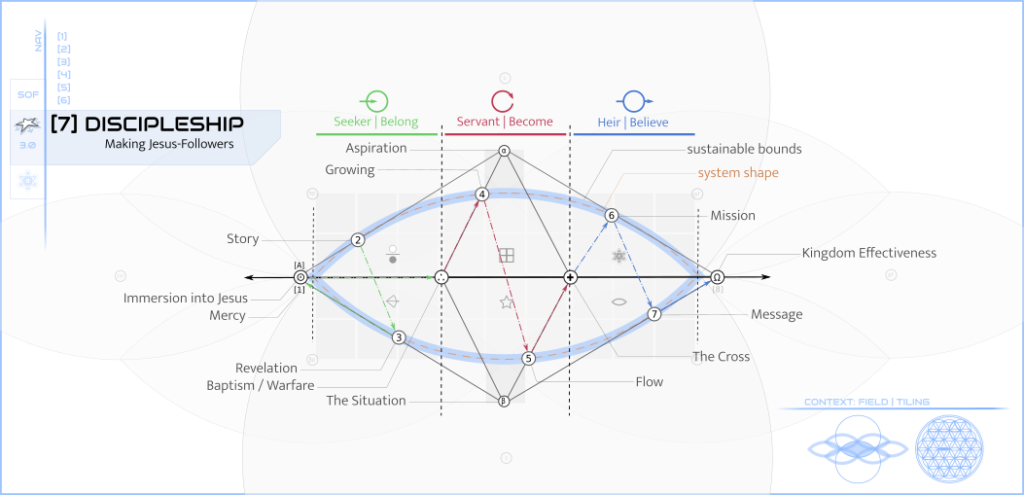The Journey Map
The Journey Map is an integrated framework for individual and communal spiritual journey in the form of mission-saturated transformative movement. Drawing from ancient texts, centuries of spiritual practice, and hundreds of active case studies, the framework illustrates a “map” for change-agents to understand their position in the spiritual landscape and the possibilities for transformative experience and action.
Just like any map, The Journey Map should be interpreted as descriptive rather than prescriptive: it’s more useful for understanding the contours of the spiritual journey than it is for telling people how to have one or where to go. This means people may move freely any direction on the map, though there are “paths” that are historically “well worn” or typical, and the map can provide insight into how to get from point A to point B.
Three Phases
There are three phases of the spiritual journey the represent different experiences and relational orientations. These three phases can be thought of as The 3Bs: [3] Belong-Become-Believe
For those following The Way of Jesus, the three phases could be described as:
Belong
Do I feel I have a place with Jesus and his people and do they belong in my story?
Idenity: Seeker
Growing in Jesus: Lordship
Become
How do I become the person who I want to be in Christ and what is he causing my situation to become?
Idenity: Servant
Growing in Jesus: Likeness
Believe
Where is Jesus leading me to manifest his Kingdom, exercising and demonstrating increasing faith?
Identity: Heir
Growing in Jesus: Life-on-Life
For those who see their journey as less Christian-specific, the three Phases could be described as:
Belong
Do I feel I have a place with this community and do they belong in my story? Does this spiritual path/Mythos belong in my life?
Become
How do I become the person who I want to be in this community and on this path? What does this cause my situation to become?
Believe
Where do I manifest the world that ought to be, exercising and demonstrating increasing faith?
While a person does not have to navigate the three phases sequentially, and there is a natural “spiraling” of these phases that combines the linear and cyclical experience of them, people facilitating MisComs should treat the Phases as sequential spaces in the Belong > Become > Believe order to avoid the Carts Before Horses problem that leads to Institutional Tyranny, among other dehumanizing and unsustainable problems.1
Seven Positions / Zones
The Map includes seven positions and two transition zones.
Belong Phase
Become Phase
Believe Phase
Adaptations
[7] The Spiritual Journey

Adaptation of The Journey Map to the individual spiritual journey according to the Way of Jesus.
[7] The Promised Land
[Working on this one.]
References & Notes
- There’s a lot of controversy about the correct order of these “phases” of the spiritual journey. In our case, we recommend following the “Celtic Model” practiced by the monks in the British Isles that emphasized community-in-process and organic growth into faith-identity and societal transformation. This is in contrast to the “Roman Model” that was trying to defend a “perfected” Christendom institution from contamination: thus “Believe” came first and doctrinal fidelity was the initiation that proceeded access to growth resources (Become) and community (Belong).


